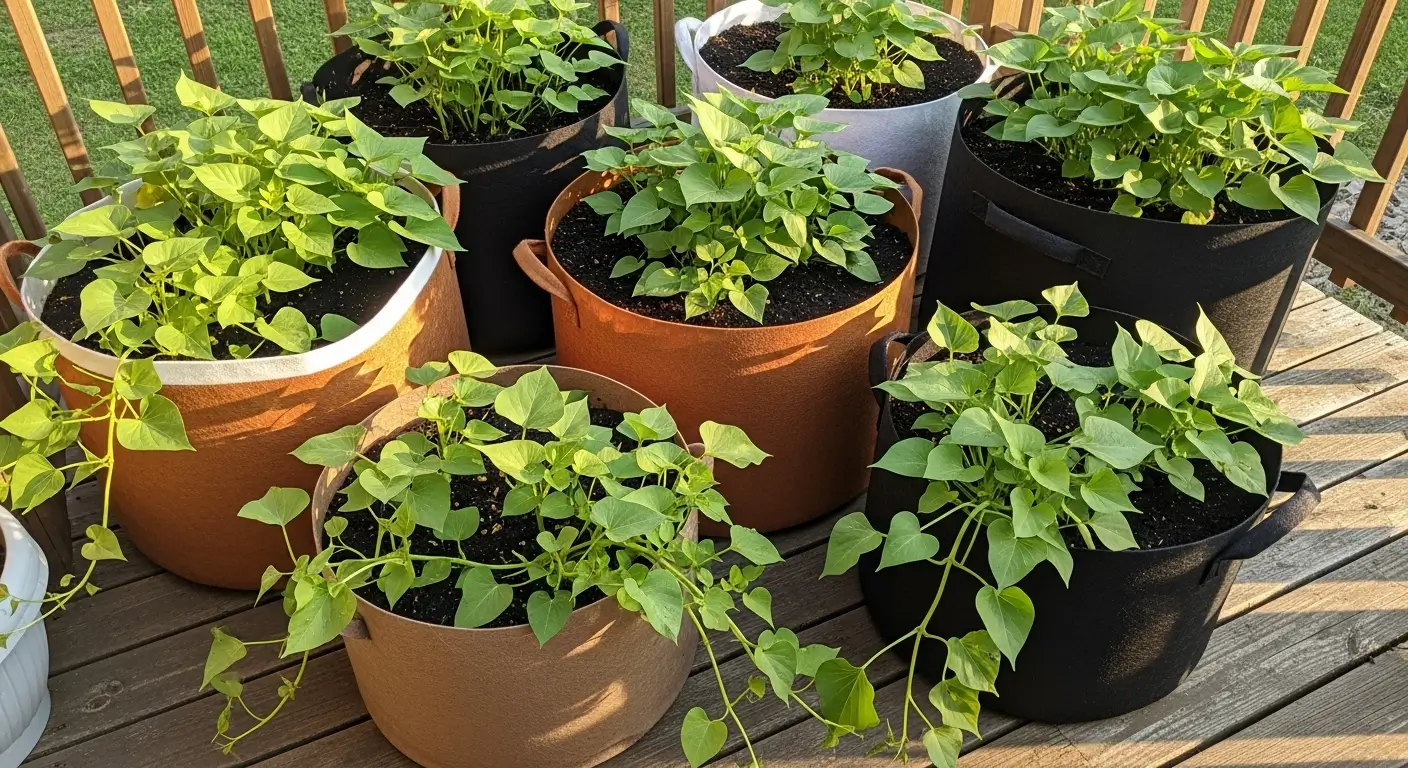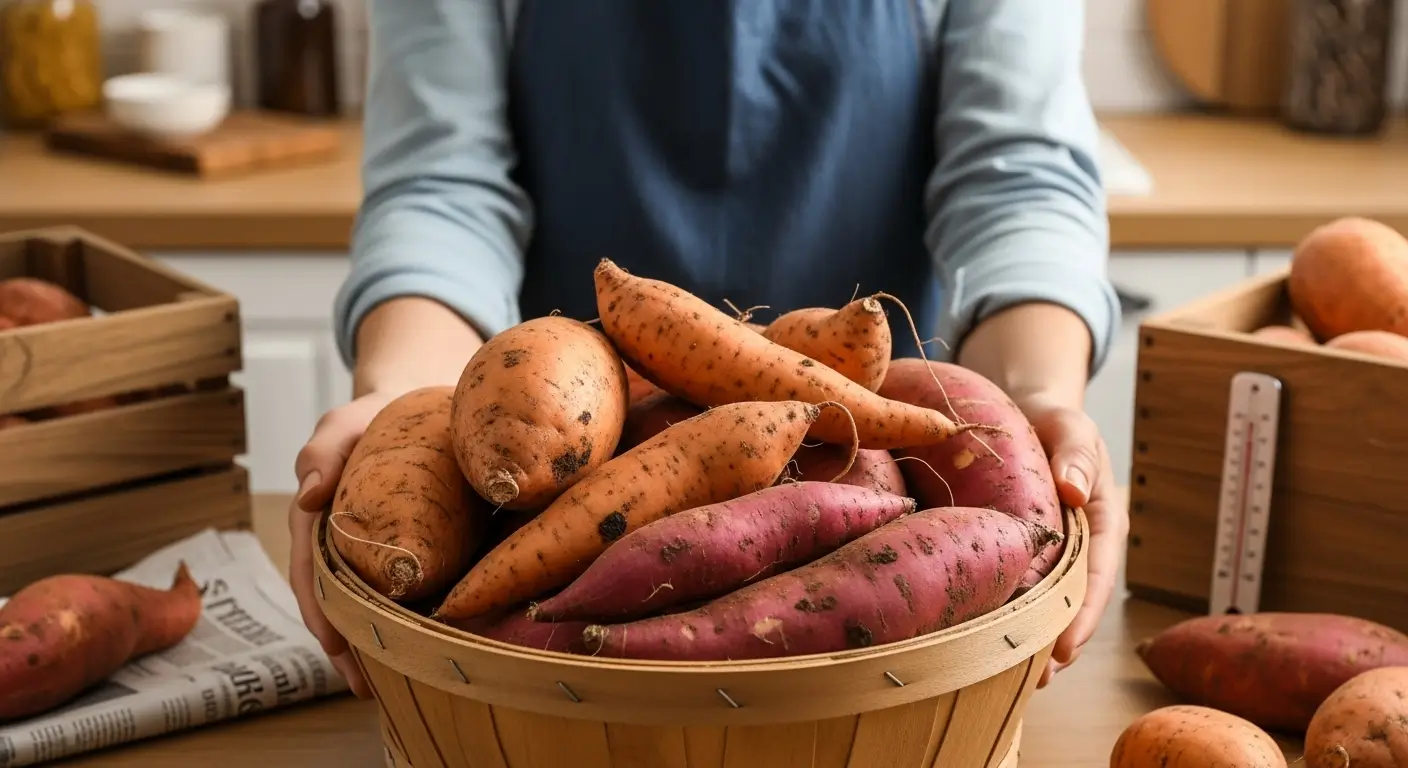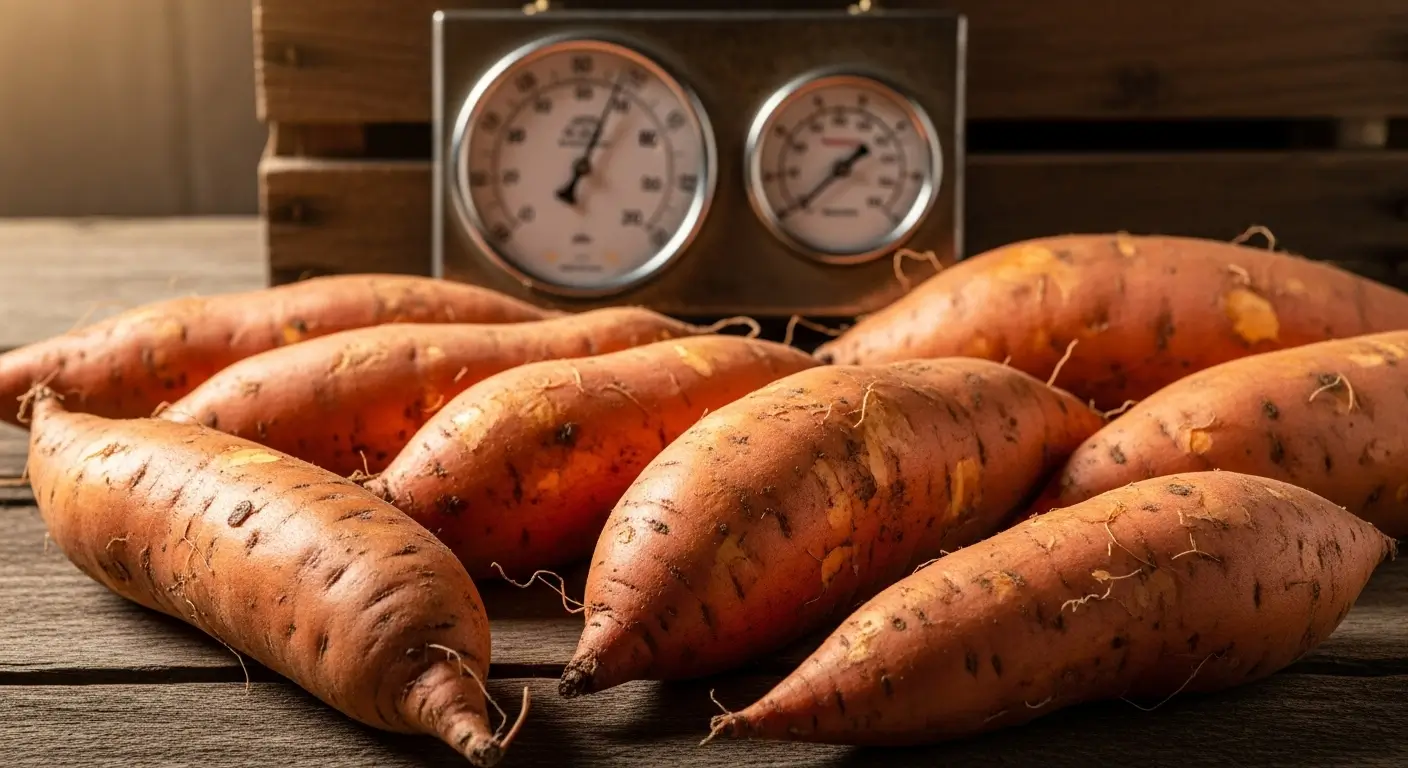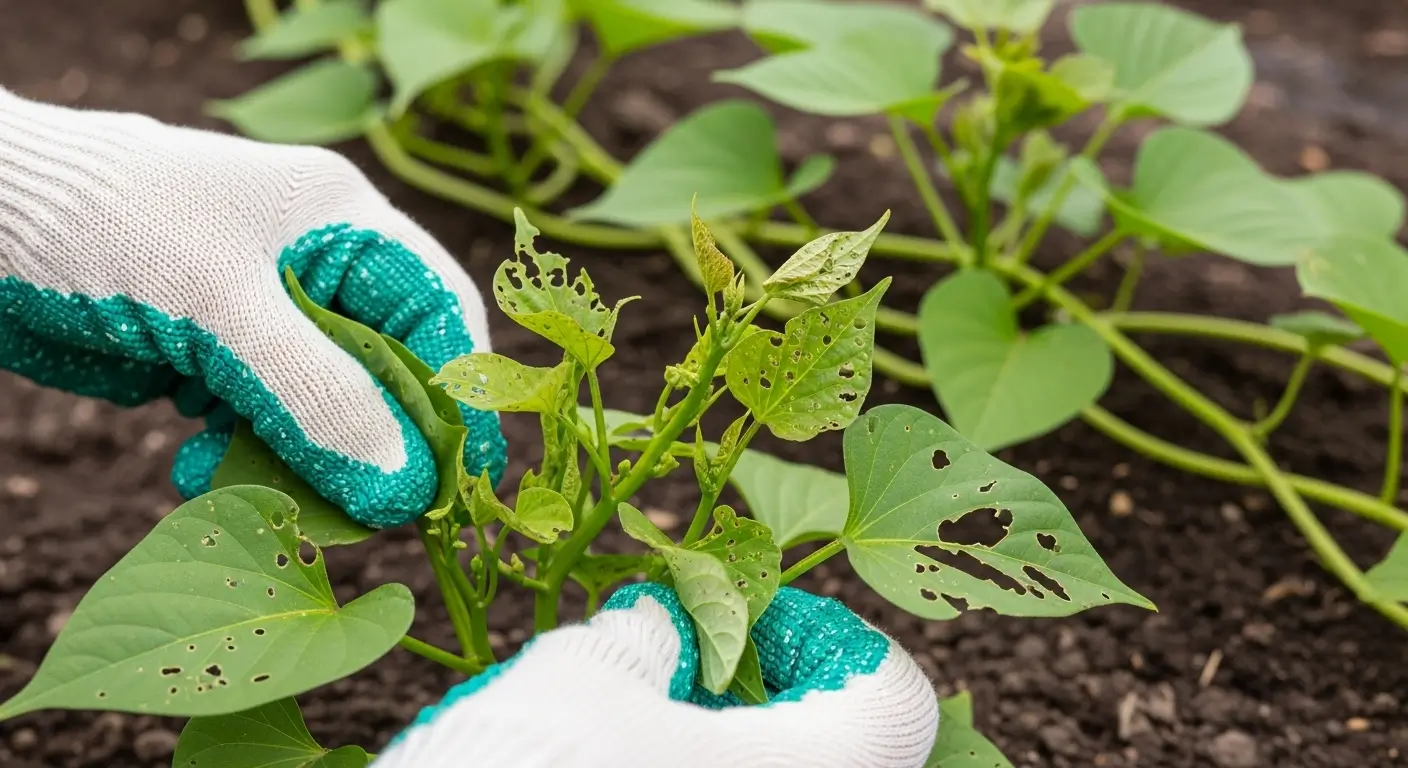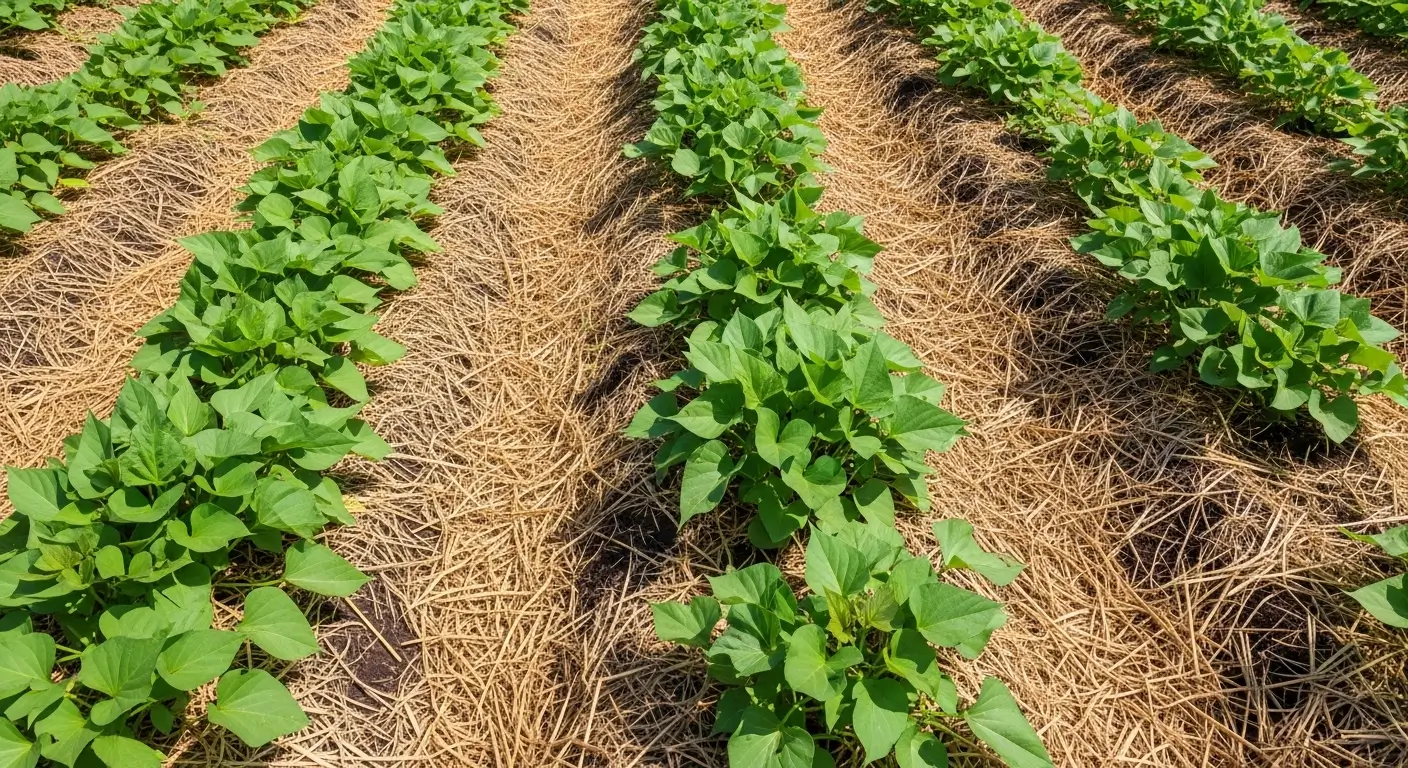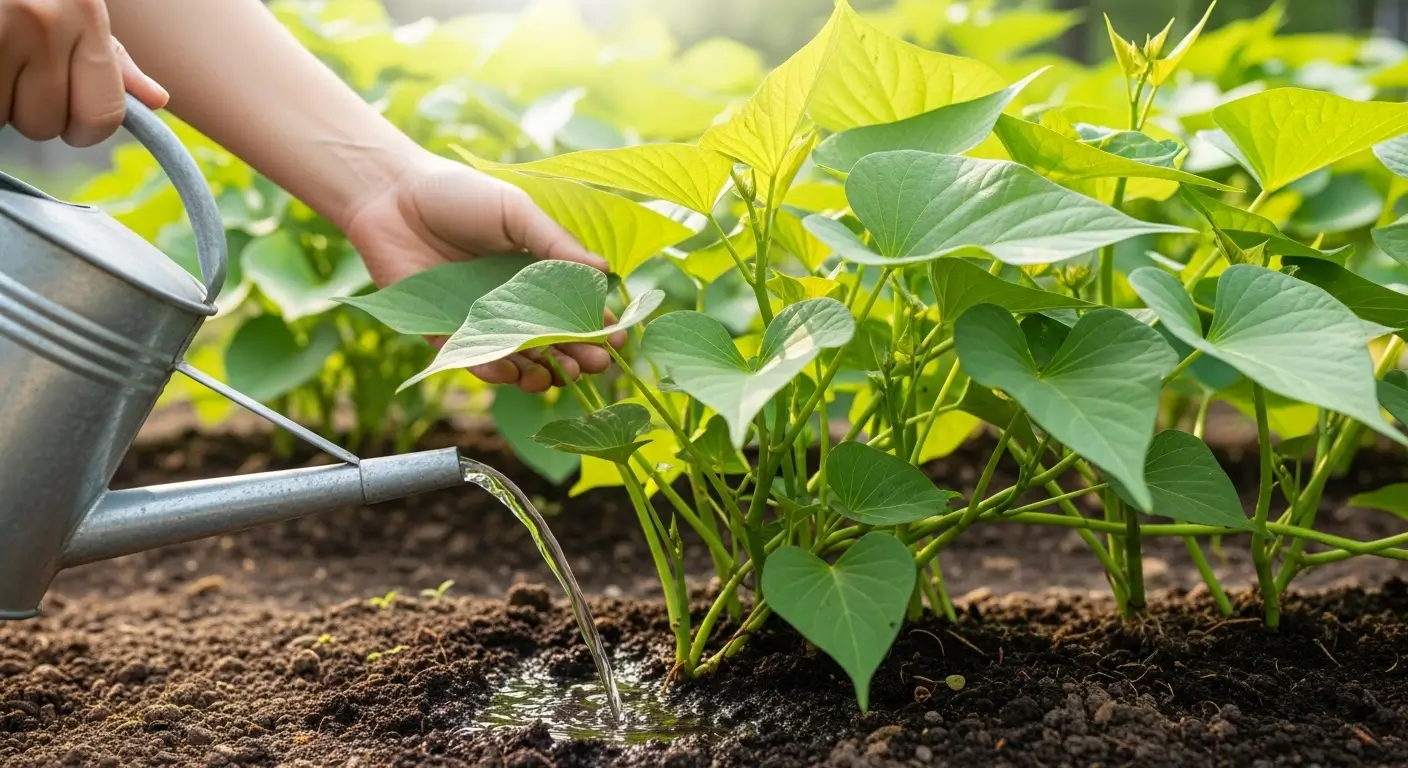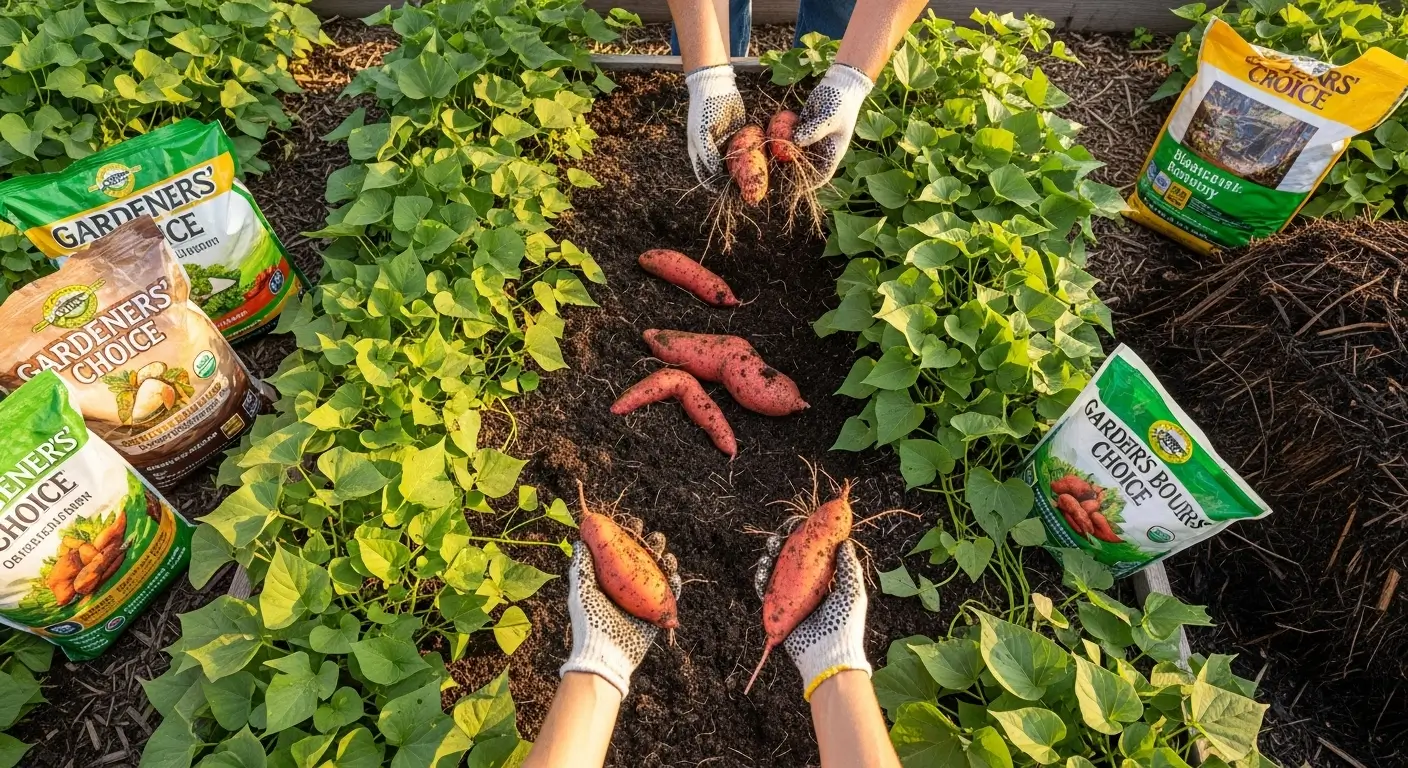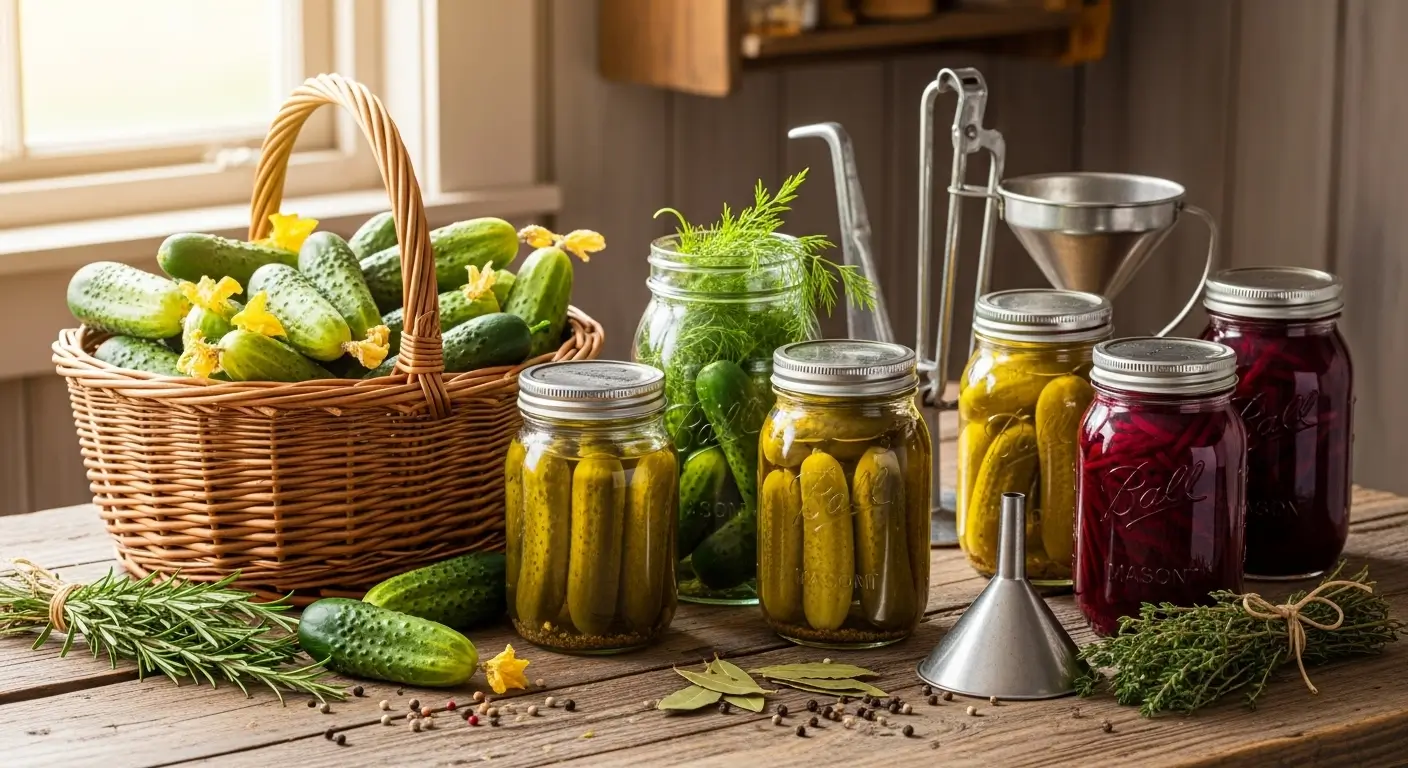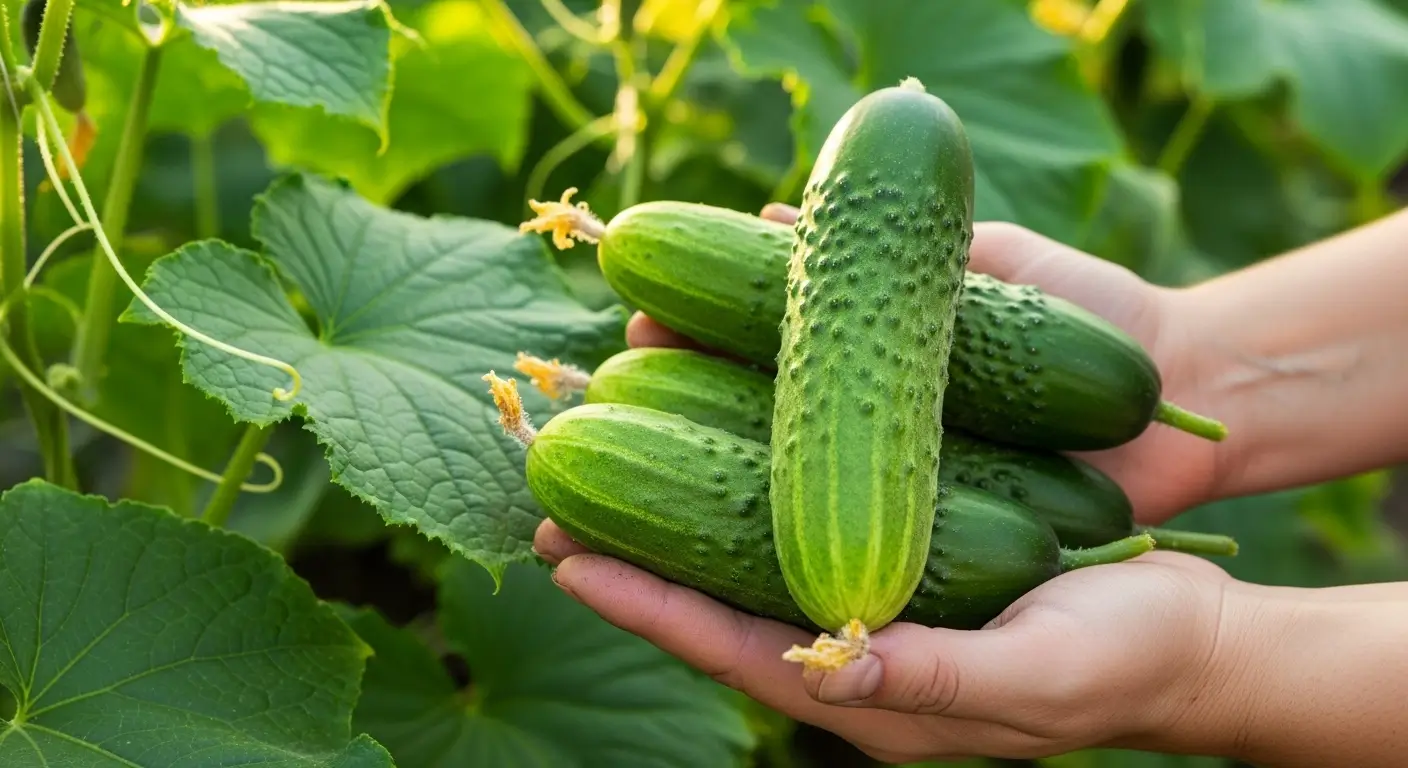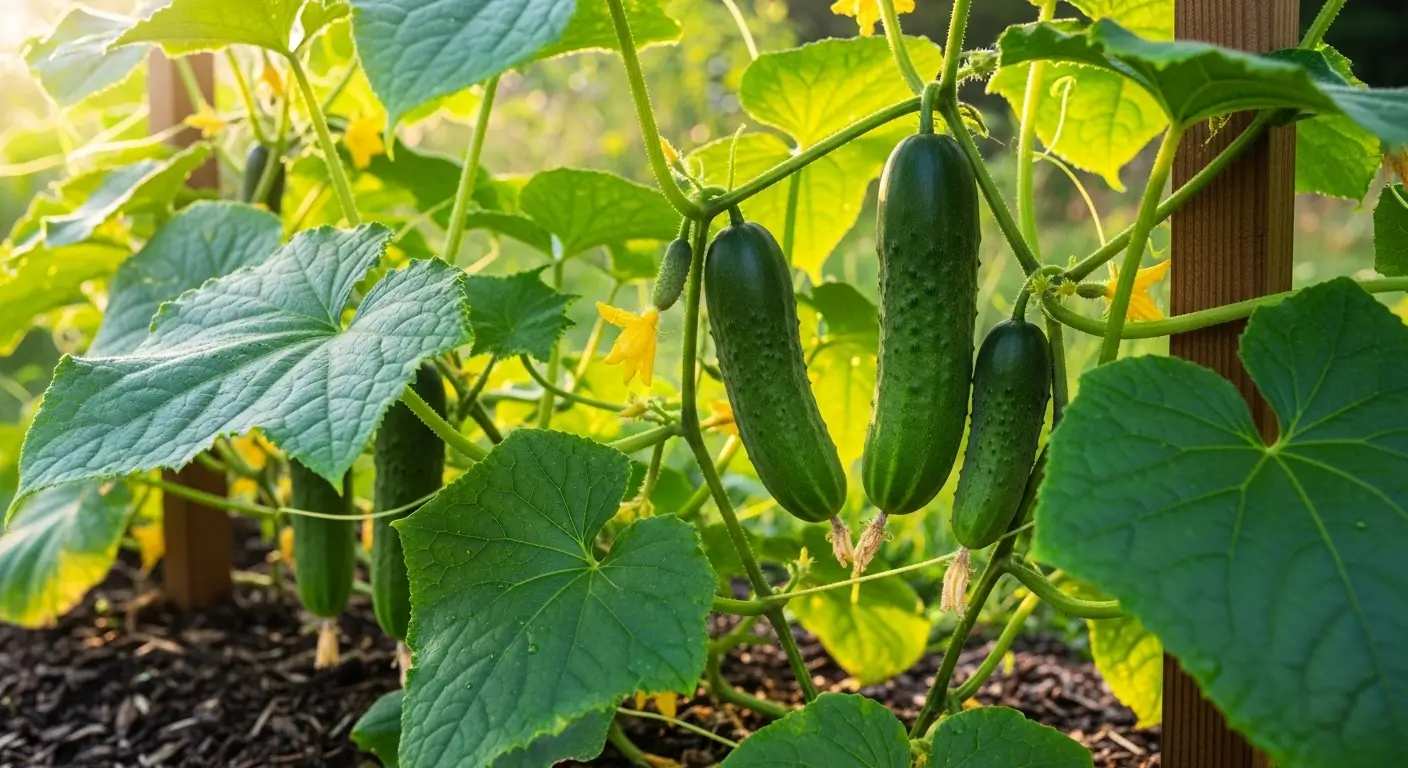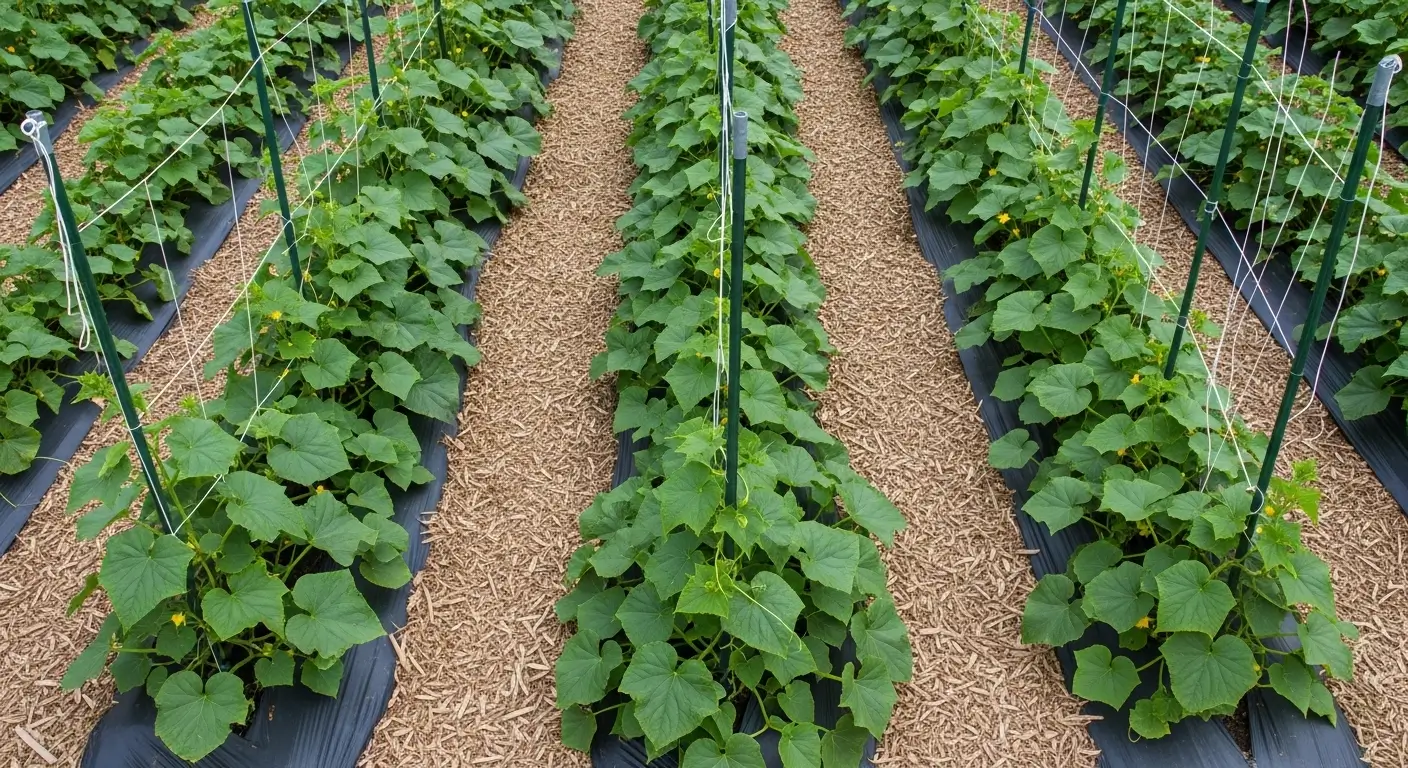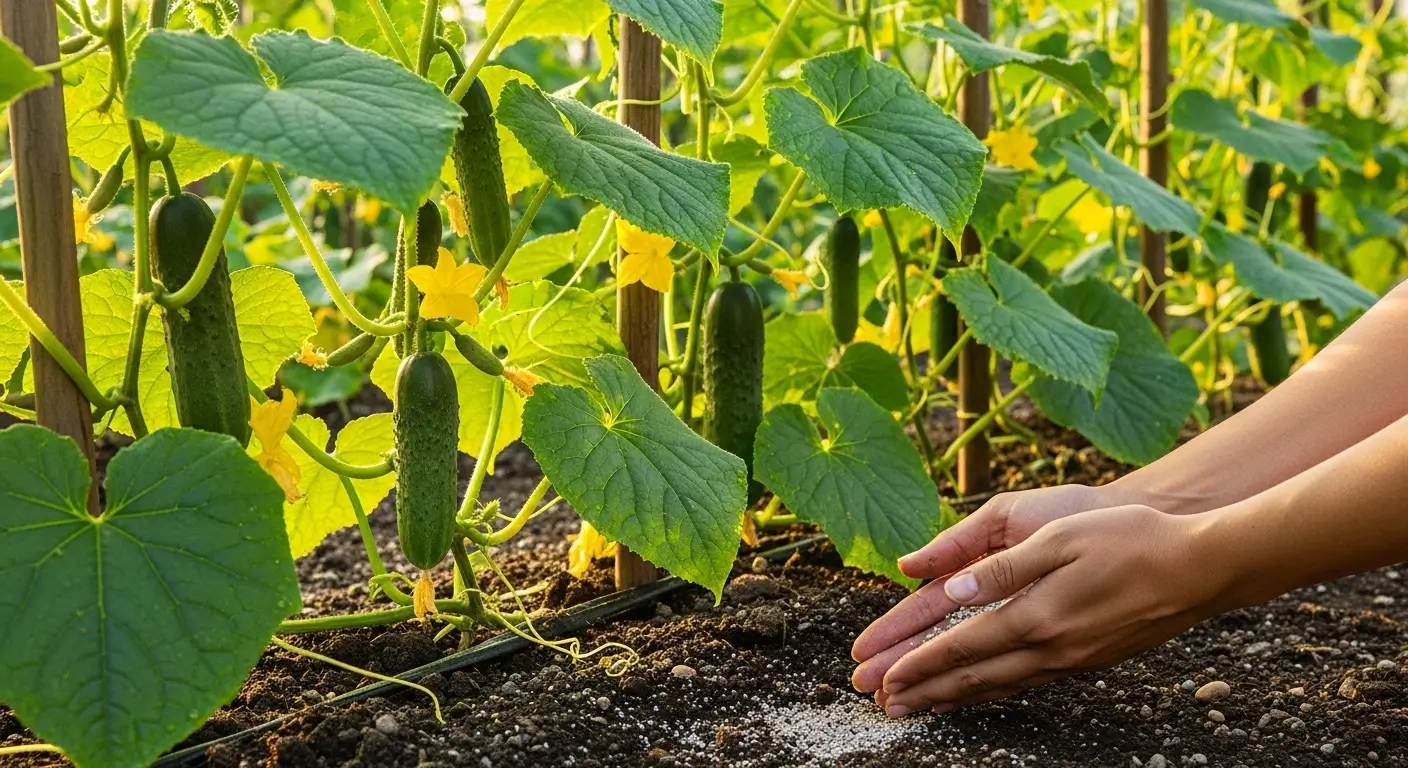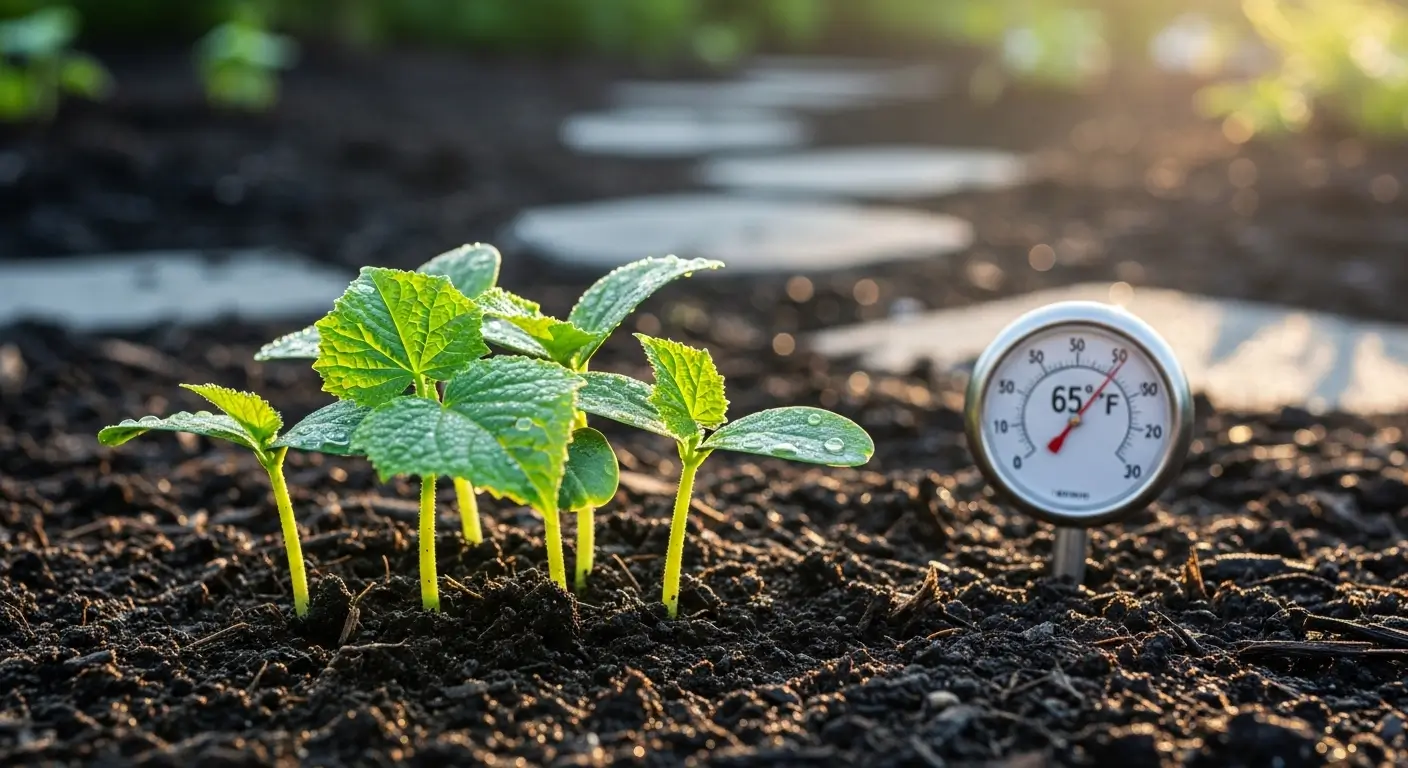Okay, so here’s the thing—I never thought I’d be that person learning how to grow sweet potatoes in containers, dragging massive pots around my patio like some kind of suburban farmer. But guess what? Five years later, I’m totally obsessed, and my neighbors think I’m either crazy or brilliant (jury’s still out on that one).
Growing sweet potatoes in containers sounds super intimidating, right? Like something only those Pinterest-perfect gardeners with their matching planters and Instagram-worthy setups could pull off. But honestly? It’s way easier than you think, and I’m kinda convinced it’s actually better than planting them in the ground. Plus, you don’t have to deal with whatever horrifying soil situation is happening in your backyard.
Table of Contents
Why Learn How to Grow Sweet Potatoes in Containers?
Look, I’m gonna be honest with you—I started growing sweet potatoes in pots because my soil is concrete and mixed with regret. But it turns out there are tons of reasons why container gardening sweet potatoes is actually genius:
First off, you’re the boss of your soil. No more wondering if that weird clay stuff in your yard will actually grow anything besides weeds. You get to create the perfect little sweet potato paradise from scratch.
And here’s something nobody tells you—containers heat up way faster in spring. Your sweet potatoes get this nice head start while ground-planted ones are still shivering in cold soil. It’s like giving your plants a heated blanket!
Oh, and the harvest? Chef’s kiss. Instead of playing “find the sweet potato” with a shovel and inevitably stabbing through half your crop (don’t ask me how I know this), you just tip over the container. It’s like opening the world’s best surprise package.
Key Takeaways for Container Sweet Potato Success
Alright, before we get into the weeds (pun intended), here’s the stuff you absolutely can’t mess up:
- Size matters, people: We’re talking 20 gallons minimum—don’t cheap out here
- Drainage or death: These babies will literally rot if their feet get too wet
- They’re heat junkies: Cold sweet potatoes are sad sweet potatoes
- Feed ’em good: Think of them as hungry teenagers who never stop growing
- Patience is a virtue: 3-4 months from planting to digging up treasure
Choosing the Best Containers for Sweet Potatoes
Okay, story time. In my first year, I was like, “How big can sweet potato roots really be?” and bought these cute little 10-gallon pots. Spoiler alert: sweet potato vines are the overachievers of the plant world, and I put them in studio apartments when they needed mansions.
Size Requirements
When we’re talking best containers for sweet potatoes, forget everything you think you know about “big enough.” These plants are space hogs in the best possible way. I’m talking 20 gallons bare minimum, but honestly? Go bigger if you can swing it.
Here’s my “learn from my mistakes” size guide:
- 20 gallons: Will work, but you’re getting maybe 2-3 decent sweet potatoes
- 30 gallons: Now we’re talking! This is where the magic happens
- 40+ gallons: If you’ve got the space, these plants will reward you big time
Container Types That Actually Work
Fabric pots are my ride-or-die choice. They breathe, they drain like champs, and when harvest time comes? You can literally cut them open instead of wrestling with a stuck sweet potato. Plus, they’re way easier to move around when you inevitably hate where you put them.
Big plastic containers work great too—drill more holes than you think you need. I’ve used old storage tubs before (the food-grade ones, not the sketchy garage containers). They’re cheap and they work.
Those fancy wooden half-barrels look amazing on Pinterest, but they’re heavy and will eventually rot. If you go this route, know what you’re signing up for.
Hard no list: Tiny pots (seriously, just don’t), anything without drainage holes, and metal containers that’ll turn your sweet potatoes into baked potatoes in the summer heat.
Find Your Perfect Container Setup
Okay, I know all this container talk might feel overwhelming—trust me, I’ve been there! When I started, I spent way too much time second-guessing myself in the garden center, holding different sized pots and wondering “Is this big enough? Too big? What if I mess this up?”
So I created this little calculator to take all the guesswork out of it. Just answer three quick questions about your space, goals, and experience level, and it’ll tell you exactly what to buy. No more standing in the store feeling confused!
🥔 Sweet Potato Container Calculator
Find your perfect container setup in seconds!
Pretty cool, right? I wish I’d had something like this when I was starting out—would’ve saved me from that whole 10-gallon pot disaster I mentioned earlier!
Now that you know exactly what containers to get, let’s talk about filling them with the perfect soil mix…
Essential Growing Medium and Soil Requirements
This is where container growing gets fun—you get to build the perfect home for your sweet potatoes from scratch. No dealing with whatever disaster is happening in your actual dirt.
The Perfect Soil Mix
I’ve tried SO many different combinations over the years (my garage looks like a soil ingredient warehouse), and here’s what actually works:
- 40% good potting mix (not the cheap stuff—your plants will judge you)
- 30% compost (homemade is great, store-bought works fine)
- 20% perlite (those little white chunky things that make everything drain better)
- 10% aged manure or worm castings (fancy plant food, basically)
Sounds complicated? You can cheat and buy “container vegetable mix” and add some extra perlite if it looks too heavy. Nobody’s judging your soil-mixing skills here.
Drainage is Everything
I will say this louder for the people in the back: SWEET POTATOES HATE WET FEET. They will give up on life if they sit in soggy soil. We’re talking multiple drainage holes—not just one sad little hole in the middle.
I always throw broken pottery or rocks into the bottom of my containers. Some garden snobs say it doesn’t help, but I’ve never had a plant die from root rot using this method, so I’m sticking with it.
Step-by-Step Planting Guide
Getting Your Sweet Potato Slips
You’ve got two options here: buy slips (baby plants) from a nursery or grow your own from sweet potatoes. Buying is definitely the lazy person’s route (no shame in my game), but growing your own is pretty cool if you’ve got the time and patience.
If you’re buying slips, make sure you’re ready to plant them right away. These little guys are drama queens and don’t like waiting around.
Planting Day
Timing is super important here. Sweet potatoes are total heat babies—they want soil that’s consistently above 60°F. In my neck of the woods (Zone 5b), that’s usually late May. Don’t rush it because cold, sad sweet potatoes are nobody’s friend. For more details on timing this right, check out when to plant sweet potatoes so you don’t mess this up.
Here’s how I do it:
- Fill up your containers with soil mix, leaving a couple of inches at the top
- Water everything down until it’s nice and moist (but not swampy)
- Dig holes about 4-5 inches deep, space them out about a foot apart
- Plop in your slips so only the top leaves are showing
- Give ’em a gentle drink to settle everything in
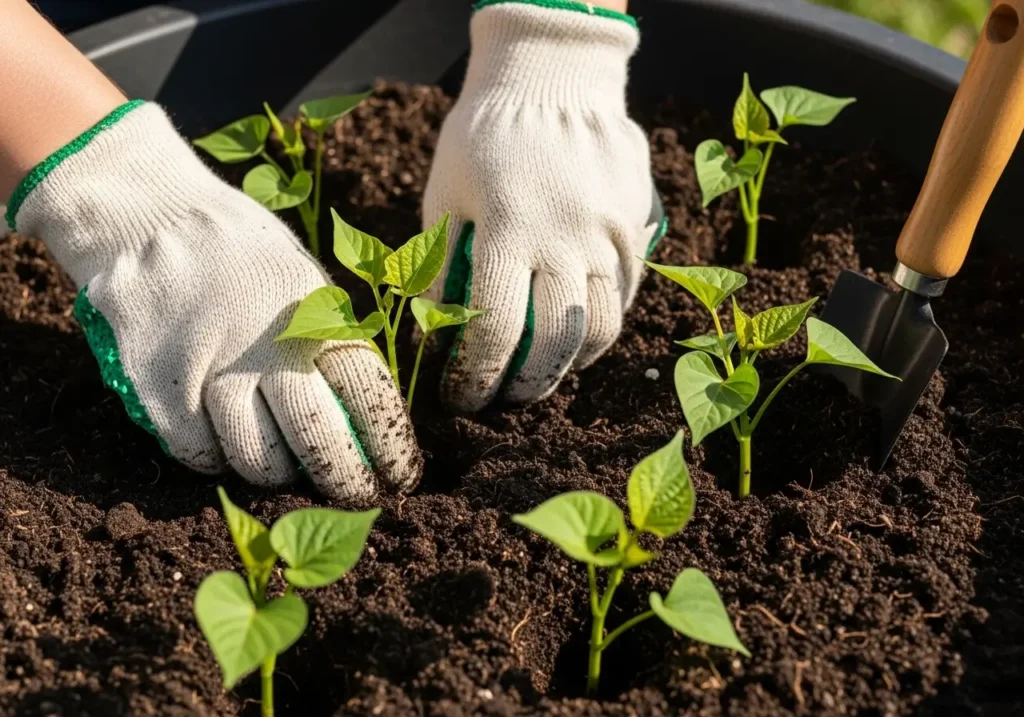
A pro tip from someone who’s fried her fair share of plants is to plant these babies in the evening or when it’s cloudy. Direct sun will absolutely roast newly planted slips.
Care and Maintenance Throughout the Season
Watering Wisdom
Container plants are basically that friend who’s constantly thirsty—they dry out way faster than stuff planted in the ground. I’m out there checking my sweet potato containers every day once summer hits.
The trick is keeping them consistently moist without turning them into a swamp. I got one of those cheap moisture meters (like 10 bucks, best investment ever) because I was terrible at the whole “stick your finger in the soil” thing.
Deep watering less often beats daily sprinkles—trust me on this one.
Feeding Your Plants
Sweet potatoes are surprisingly hungry little guys. I feed mine every 3-4 weeks with regular liquid fertilizer (nothing fancy). Still, once those vines really start going crazy, I switch to something with less nitrogen. Too much nitrogen late in the game means gorgeous vines but sad, tiny sweet potatoes.
My super scientific feeding schedule:
- First month or two: Regular balanced fertilizer every couple of weeks
- Middle of the season: Keep doing what you’re doing
- Last stretch: Switch to low-nitrogen stuff to encourage more tubers
Managing Those Vigorous Vines
Nobody warned me that sweet potato vines are basically nature’s version of kudzu. These things will try to take over your entire patio, your neighbor’s patio, and probably the moon if you let them.
I’ve learned to roll with it. Let them cascade over the sides (looks pretty cool) or train them up something if you’re feeling fancy. Some people pinch the vines to make more sweet potatoes, but honestly? I tried both ways and couldn’t tell much difference. The plants know what they’re doing better than I do.
Troubleshooting Common Container Issues
The Dreaded Root Rot
If your plants start looking yellow and sad despite having moist soil, you’ve probably got a drainage problem. Check those holes at the bottom—they might be clogged, or you might need more of them. I’ve lost plants to this, and it’s honestly heartbreaking.
Stunted Growth
Nine times out of ten, this means either your container is too small (guilty as charged on my first attempt) or your soil mix isn’t cutting it. Sweet potatoes need room to spread and good food to fuel those crazy vines.
Pest Problems
The good news is container plants usually have fewer bug issues than ground-planted ones. You might get some flea beetles or weevils, but I just pick them off when I see them. Cornell Cooperative Extension studies show that beneficial insects and proper garden hygiene are your best defense against most sweet potato pests. Most of the time, the good bugs take care of the bad bugs without me having to do much.
Harvesting Your Container-Grown Sweet Potatoes
This is honestly the best part of the whole thing! No digging around in the dirt, no accidentally stabbing your sweet potatoes with a shovel—just tip that sucker over and start treasure hunting.
I usually harvest right before the first frost (around mid-October here). The vines look pretty rough by then, but those sweet potatoes have been secretly getting plump underground all season.
The Harvest Process
- Stop watering about a week before you plan to harvest
- Cut back the vines to maybe 6 inches from the container
- Tip it over onto a tarp (this is the fun part!)
- Gently dig through and separate your sweet potatoes from all the roots and dirt
- Brush ’em off, but don’t wash them yet
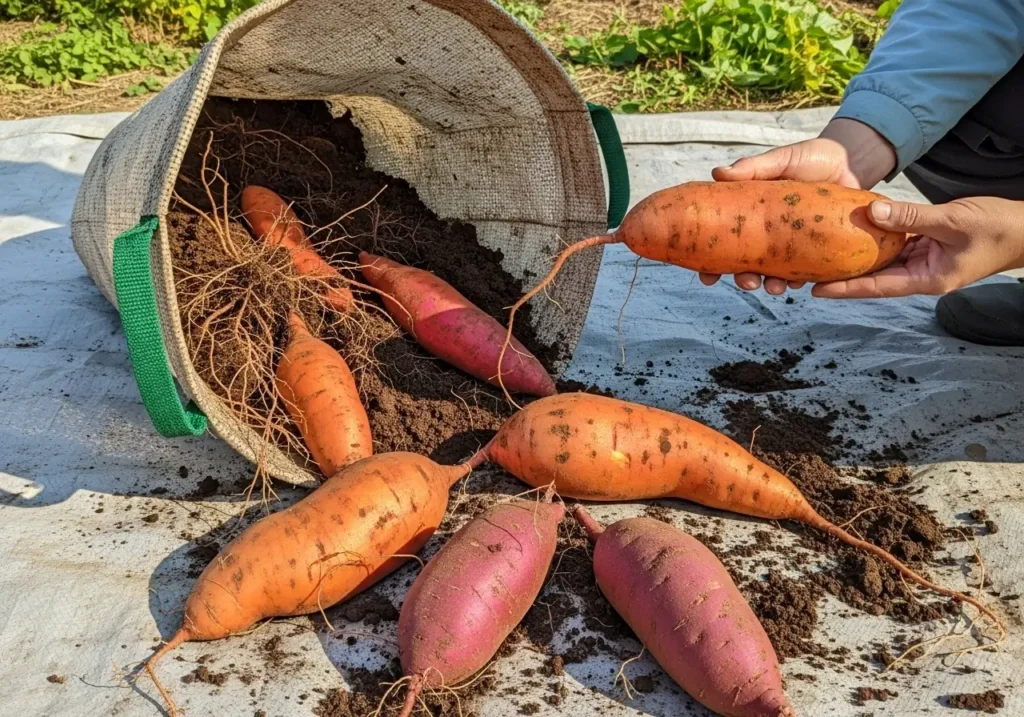
Curing for Storage
Here’s something that actually matters—if you cure your sweet potatoes adequately, they taste way better and last way longer. For about a week, I stick mine in a warm, humid spot (like 80-85°F). I use a spare bathroom and run the shower occasionally to keep it moist.
After that, they’ll keep for months in a cool, dark place around 55-60°F.
Seasonal Tips for Year-Round Success
Spring Preparation
Get your containers ready early because they take forever to warm up. Sometimes I wrap mine in black plastic or move them to the sunniest spot I can find to speed things up.
Summer Care
This is when things get real. Check for water constantly, and throw shade cloth over them during those brutal heat waves. Black containers can get hot enough to cook an egg (don’t ask me how I know this).
Fall Harvest and Beyond
Don’t wait too long to harvest—sweet potatoes get cranky when it’s below 50°F. And here’s a pro tip: save a few of your best sweet potatoes to start your own slips next year. It’s addictive, I’m warning you now.
If you want the whole sweet potato growing experience, including ground planting and all that jazz, check out our complete sweet potato growing guide.
Final Thoughts: Why Container Sweet Potatoes Are Worth It
Look, I’m not gonna lie—growing sweet potatoes in containers takes a little more babying than just throwing them in the ground and hoping for the best. You’ve gotta water more, feed more, and pay attention more.
But here’s the thing—when you tip over that container in October and find 4-5 pounds of gorgeous sweet potatoes, you’re gonna feel like the absolute gardening champion of the world. Your neighbors will be impressed (and slightly confused), your family will actually eat the vegetables you grew, and you’ll probably end up with way too many containers next year because this stuff is addictive.
Start small—maybe one or two containers this year. Find a sunny spot, get decent-sized pots, and don’t overthink it. Sweet potatoes are pretty forgiving, and the container thing makes everything easier.
So what do you think? Ready to join the container sweet potato club? Do you have questions about getting started, or are you already growing them and have tips to share? Drop a comment below—I love hearing about other people’s gardening adventures (and disasters, because let’s be real, we all have them)!
Sweet Potato Container Growing Frequently Asked Questions
What size container do I need to grow sweet potatoes?
You need at least a 20-gallon container, but 30-40 gallons is ideal for best yields. Sweet potatoes have extensive root systems and need plenty of space to develop properly. Smaller containers will result in stunted growth and poor harvests.
When should I plant sweet potatoes in containers?
Plant sweet potato slips when soil temperature is consistently above 60°F, typically 2-3 weeks after your last frost date. In Zone 5b, this is usually late May. Don’t rush planting as cold soil will stress the plants.
What type of soil is best for container sweet potatoes?
Use a well-draining mix of 40% potting mix, 30% compost, 20% perlite, and 10% aged manure. Never use garden soil in containers as it becomes too heavy and doesn’t drain properly.
How often should I water sweet potatoes in containers?
Check daily and water when the top inch of soil feels dry. Container plants dry out faster than ground-planted ones, especially during hot summer months. Aim for consistent moisture without waterlogging.
How long does it take to grow sweet potatoes in containers?
Sweet potatoes take 90-120 days from planting to harvest. Plant in late May and harvest in mid to late October before the first frost for best results.
